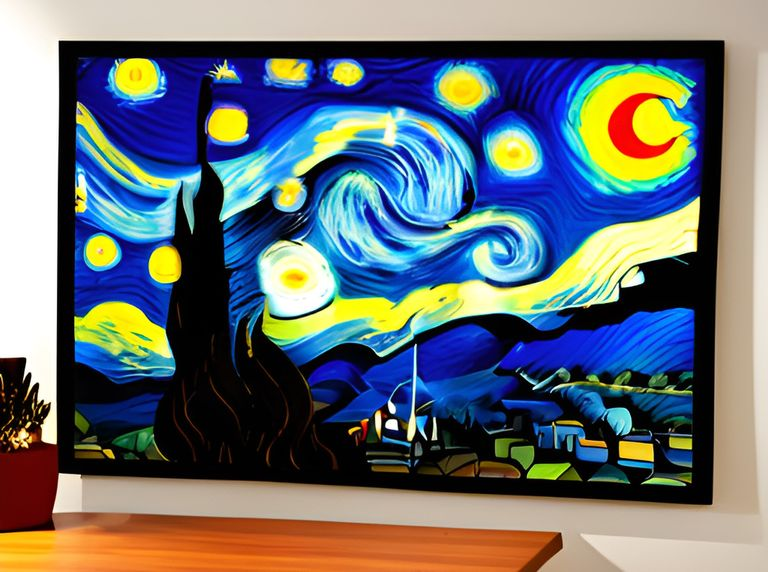Tokenization of art is the process of converting ownership of a physical art piece into a digital token on a blockchain. This creates a unique digital asset that can be traded, transferred, and stored securely.
There are a number of potential benefits to tokenizing art.
For example, it can make it easier to buy and sell art, and it can also help to reduce fraud and counterfeiting. Additionally, tokenization can open up new investment opportunities for art collectors and investors.
However, there are also some limitations to tokenizing art.
For example, it is important to note that tokenizing a physical art piece does not automatically transfer ownership of the physical piece to the token holder. The token may only represent a fractional ownership stake in the art piece, or it may simply be a digital certificate of ownership.
Another limitation is that the tokenized art market is still relatively new and underdeveloped. This means that there may be fewer buyers and sellers than in the traditional art market, and liquidity may be lower.

Is it worth tokenizing art?
Whether or not it is worth tokenizing art depends on a number of factors, such as the type of art, the artist, and the target market.
For example, it may make sense to tokenize high-value art pieces that are difficult to buy and sell in the traditional market. However, it may not be worth tokenizing lower-value art pieces or art pieces from less well-known artists.
It is also important to consider the costs and fees associated with tokenizing art. These costs can vary depending on the platform used and the complexity of the tokenization process.
Advantages
Fractional Ownership: Tokenization allows art to be divided into smaller, tradable shares. This makes art investment more accessible to a broader range of investors who can buy and trade tokens representing partial ownership.
Liquidity: Tokenized art offers liquidity, enabling investors to buy and sell art shares more easily compared to traditional art investments, which may involve long holding periods.
Transparency: Blockchain technology provides transparency regarding ownership, provenance, and transaction history, reducing the risk of art forgery and theft.
Global Accessibility: Tokenized art can be traded globally, eliminating geographical limitations and expanding the market.
Fractional Income: Art owners can earn a portion of the revenue generated from art exhibitions, loans, or sales without selling the entire piece.
Challenges
- Regulatory Complexities: The legal and regulatory landscape for tokenized art is still evolving, and it can be complex, particularly when art crosses international borders.
- Valuation: Determining the value of tokenized art can be subjective and may require expert appraisals.
- Market Volatility: Art markets, like cryptocurrencies, can be volatile. Investors may experience price fluctuations, affecting the value of their art tokens.
- Cultural and Aesthetic Considerations: Some argue that art is about culture and aesthetics, not just financial value. Tokenization may commodify art and shift the focus from creativity and cultural expression to investment.
Is it possible to tokenize art?
Yes, it is possible to tokenize art. There are a number of platforms that offer tokenization services for art collectors and investors. These platforms typically use blockchain technology to create and manage the tokens.
Blockchain Technology: Various blockchains, including Ethereum, Solana, and Tezos, have been used for tokenizing art. Smart contracts on these platforms govern the creation, transfer, and management of art tokens.
Metadata and Provenance: Art tokens can store metadata and provenance information on the blockchain, providing a secure and immutable record of an artwork's history.
Marketplaces: Online platforms and marketplaces have emerged for trading art tokens. These platforms facilitate token creation, issuance, trading, and provide liquidity.
Technical Possibilities and Limitations
The technical possibilities of tokenizing art are extensive.
Blockchain technology can be used to create a secure and transparent record of ownership of art pieces.
Additionally, blockchain can be used to facilitate the trading and transfer of art tokens.
However, there are also some technical limitations to tokenizing art.
- It can be difficult to assess the value of a tokenized art piece, and there is a risk of fraud and hacking.
- High Fees: Transaction fees on some blockchains can be high, affecting the cost-effectiveness of tokenizing lower-value artworks.
- Adoption Challenges: The art world is traditionally conservative, and convincing artists, collectors, and institutions to embrace tokenization can be challenging.
Recent status
The tokenization of art is still a relatively new concept, but it is gaining traction in the art world. A number of art galleries and auction houses are now offering tokenized art for sale. Additionally, there are a number of startups that are developing new platforms and services for the tokenized art market.
Long-term Sustainability
The long-term sustainability of the tokenized art market will depend on a number of factors, such as the growth of the blockchain industry, the acceptance of tokenized art by traditional art institutions, and the development of new platforms and services for the tokenized art market.
The tokenization of art is a promising new development in the art world. It has the potential to make it easier to buy, sell, and invest in art. However, it is important to be aware of the limitations and risks associated with tokenizing art before investing.